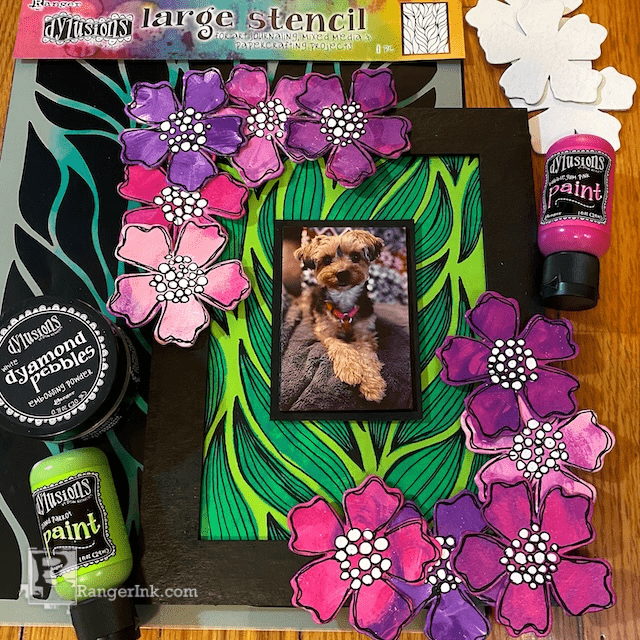Use Adirondack products to create gorgeous polymer clay sheets to cover metal tins, pens and more!

Polymer Clay and the Adirondacks By Debbie Tlach
- Materials
- Instructions
- Perfect Pearls™ Pigment Powder Kits
- Ranger Mini Misters
- Ranger Cut n’ Dry™ Foam and Felt Pads
- Ranger Non-Stick Craft Sheet™
- Tim Holtz® Alcohol Inks
- Kato Polyclay™ - Two 2oz. bars - Translucent
- Scrap Clay
- Pasta machine
- Acrylic roller
- Kato NuBlade
Instructions
Creating the Clay Pattern
(1) Working over the Non-Stick Craft Sheet, condition clay and divide into four equal pieces.
(2) Roll the first piece of clay through the pasta machine on 4th largest setting. Unscrew the Adirondack Dabber bottle and remove the top. Use the Perfect Pearls paintbrush to apply an even coat of paint to the clay. Let dry.
(3) Roll the second piece of clay through the pasta machine on 4th largest setting. Remove the lid of the Adirondack Pigment pad, hold with the pad facing downward and apply ink directly to the clay by tapping pad directly onto the surface. Keep taping the pad to the clay until an even coat is achieved. Let dry. Tip: A small fan directed at the painted clay will speed drying time.
(4) Roll the third piece of clay through the pasta machine on 2nd largest setting. Apply a couple of drops of Adirondack Alcohol Ink to the surface of the clay. Use a piece of Cut-n-Dry Foam to spread the ink over the surface. When dry, fold the piece of clay, ink side in. Run this piece fold first through the pasta machine.
(5) Repeat step 4 two more times. Fold and run the clay through the pasta machine, repeating until the color is even. Then run the piece through one last time on the 4th widest setting without folding.
(6) Roll the final piece of clay through the pasta machine at the 4th largest setting. Sprinkle about a half a teaspoon of Adirondack Embossing Powder into the middle of the clay. Fold the clay, sandwiching the embossing powder inside. Run it through the pasta machine fold first.
(7) Repeat step 6 two or three times until the clay has dense color but is not crumbling.
(8) Stack the layers on top of one another (where applicable paint or ink side up).
(9) Cut edges to form a rectangle. Put these pieces aside to use later.
(10) Cut the stack in half crosswise and place one half on top of the other. Note: Do this by placing one edge down first, slowly bringing the pieces into contact to avoid trapping air bubbles.
(11) Create a depression in the surface of the stacked clay ½” wide by ½” deep. Use some of the excess clay to roll a ball of clay that will fit into the hole.
(12) Repeat step 11 varying the size of the holes and balls of clay. Vary the placement and flip the block of clay over and embed 2 or 3 balls of clay in that side as well.
(13) Use the acrylic roller to compress the clay into a brick-like shape. At this point you can slice off pieces from the top of this block and make earrings or buttons.
(14) Roll out a large piece of scrap clay on the 6th widest setting on the pasta machine.
(15) Use your NuBlade to cut slices from the top of the clay brick and place these pieces onto the scrap clay. Overlap the slices, completely covering the scrap clay.
(16) Spray the surface of the clay sheet with the Mini Mister. Use the acrylic roller to gently flatten and fuse the slices. Cut the sheet if necessary to run through the pasta machine.
(17) Run the sheet through the pasta machine on the widest setting and progressively smaller settings, rotating the sheet 90 degrees each time you run it through (to lessen distortion). End with the 6th largest setting.
(18) Use this sheet to cover mint tins, pens and more.







